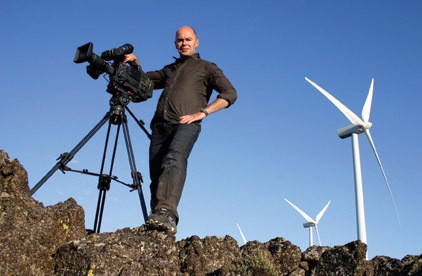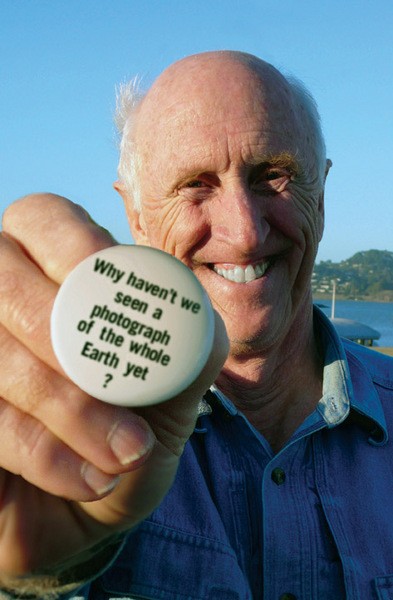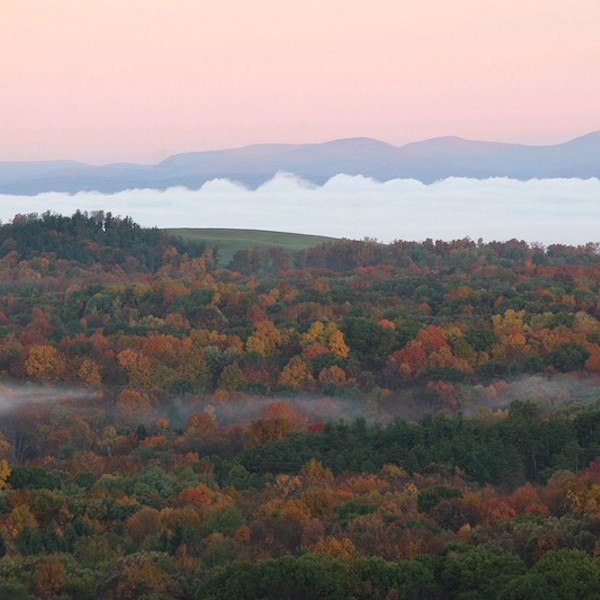Documentary filmmaker Robert Stone has been making films since 1987, when his first effort, Radio Bikini, about the relocation of Bikini islanders for US nuclear testing was nominated for an Academy Award for Best Feature Documentary. Since then, he has built an impressive body of work that examines intriguing aspects of American history and popular culture, such as the homegrown terrorism of the 1960s (2004’s Guerilla: The Taking of Patti Hearst) and the place of conspiracy theories in our culture (2007’s Oswald’s Ghost).
With Stone’s latest effort, Earth Days, the filmmaker has for the first time turned his cinematic eye to the environment. The documentary examines the origins of the environmental movement in the 1960s and ’70s, with a special focus on Earth Day 1970, a watershed event that put environmentalism on the map in earnest. The film, which premiered as the closing night film at this year’s Sundance festival, has been well received: Variety called it “quietly majestic, moving, elegiac, and deeply contemplative.”
Rhinebeck’s Upstate Films will screen Earth Days on August 15, with Stone appearing in person to discuss the film. He won’t have far to travel: He’s been a Rhinecliff resident for the last five years.
I caught up with Stone recently for a conversation about art, the environment, and the future of the planet.
Of all the films you could have made at this point in your career, why this one?
My two small children were the inspiration. With all that’s happened recently, it’s hard to remember that only a few years ago, the environment wasn’t on people’s minds very much. Al Gore’s movie An Inconvenient Truth hadn’t come out. Obama wasn’t president. But things were changing rapidly, in no small measure because the science of climate change was becoming more widely accepted. I felt compelled to make a film that dealt with the environmental crisis because where we go from here will determine the type of world my children live in. And it seemed to me that one area that had not been explored enough was how we’d gotten to this point.
A lot of young people are downbeat because they look back, see Bush’s assault on the environment, and feel as if they’re starting from the beginning, in terms of getting things going. This isn’t the case, though. The environmental movement isn’t starting from scratch, it’s making a comeback.
We have a precedent to fall back on. In the 1960s and 1970s, when the environmental movement was born, real change occurred, and it took place rapidly. If this happened once, it can happen again.
The environmental movement is by its nature forward-looking. It looks ahead to what we can do to create a more ecologically positive future. There’s value in looking back, though. There’s a great analogy in the space program of the 1960s, which was also very forward-looking. No one expected that the image created by the astronauts’ looking back at Earth would be the most profound and lasting impact of the program.
History is our teacher. I made this film in the hope that it might lay out a roadmap for where we go from here.
Would you characterize Earth Days as a hopeful film?
Yes, because it shows that very rapid social, political, and cultural change can happen. People don’t remember this, but the United States was a very different place before Earth Day 1970 than it was afterward. Littering became taboo almost overnight, and that’s just one indicator. The transformation was much broader than that. An enormous amount of vitally important environmental legislation, including the National Environmental Protection Act and the Clean Air Act, was enacted during the three years immediately following Earth Day 1970. Even more remarkably, it occurred on Richard Nixon’s watch, even though he didn’t actually care about the environment! There’s a hopeful message in this. Positive change can happen if enough political pressure is brought to bear.
There are also lessons to be learned in the mistakes the environmental movement made. Jimmy Carter presented environmentalism as a paradigm of scarcity. He wanted us to make do with less. This didn’t sit well with people. Ronald Reagan played into this resentment by arguing that we could thrive in a world without limits. Essentially, he was advocating a return to the world of the 1950s. He articulated a backlash that brought him two terms as president and brought the environmental movement to a screeching halt. Reagan was simply a much better politician than Jimmy Carter.
The environmental movement made other mistakes, too. Activists at that time tended to be very confrontational. They took the view that if you were pro-business, you were anti-environment.
The environmental movement has done a lot of growing up since then. It’s become less ideologically driven and more practical. Cap and trade, which puts a price on carbon emissions, is an example of this new approach. And, in fact, Obama represents the apotheosis of practical politics.
Being practical can be a mixed blessing, though. Some environmentalists are bemoaning the climate change bill that recently passed the House. They say it’s too watered down. Can we get the change we need by being “practical?”
Everything we can do at this point is a step forward. But there’s a counter-truth as well: We do need to make very rapid social and political progress. The environmental movement was essentially marginalized for [almost] 30 years, starting in 1980. Those three decades may have lost us everything.
Did you direct the film at any particular audience?
I was focused more on younger people than older ones, because it’s largely their future that we’re talking about. I particularly wanted to reach the people who hadn’t experienced these times personally. In fact, one of the best screenings of the film I’ve had was to a group of 400 high school students in New York [City]. They loved it. But it seems to be appealing to a pretty wide range of audiences.
You tell your story by having some of the leading figures in the sustainability movement—people like Stewart Brand, creator of the Whole Earth Catalog; Dennis Hayes, the mastermind behind Earth Day 1970; and Apollo 9 astronaut Rusty Schweickart—recount their experiences. Why did you opt for this approach?
I decided very early on that to make a film about such a vast subject meaningful, it had to be grounded in personal narrative. I thought it would be interesting to zero in on a few movement leaders who had had transformative, “A ha!” experiences about the environment. Dennis Hayes had one while trekking through Africa. Rusty Schweickart had one in outer space. Stewart Brand had one on 100 micrograms on LSD.
As a whole, the people whose stories I tell are like spokes on a wheel. They represent the various strands of the environmental movement.
I was particularly struck by the documentary footage from the 1950s, some of which is so extreme as to seem like self-parody. There are lots of other juicy moments in the film too. Do you have any particular favorites?
Well, Stewart Brand’s story is an entertaining and important one. On his acid trip, he was gazing out at the San Francisco skyline and got a sense of the Earth’s curve. It then occurred to him that the curve of the Earth must be more dramatic the higher one went. In his mind, he started going further and further into orbit and soon realized that the sight of the entire planet, seen at once, would help people understand the extent to which we are all in this together. This led to his creating buttons reading “Why haven’t we seen a photograph of the whole Earth yet?” and distributing them to people in power everywhere.
Over the years, Earth Day has become corporatized and watered down. What, if anything, should we read into this?
If Earth Day has grown thin over the years, it’s because the environmental movement itself has grown thin. Starting in 1980, our culture embraced the ideology that the market can solve everything and we became a fairly complacent society. That era came to an abrupt end with last year’s economic collapse. Things are transforming rapidly now, and, in fact, Earth Day 2010 is gearing up to be a sizable and important event.
It’s also important to remember that Earth Day has had some significant positive impacts, such as environmental curricula being adopted by schools throughout the country.
What’s next for you—another environmental documentary?
After being thoroughly immersed in making a film about the environment, every other topic seems almost irrelevant. Still, I can’t totally commit to only doing environmental films going forward. I’ll be making films for the rest of my life.
I’ve been starting to raise money for a film about what happened to the environmental movement between 1980 and the present. It would be about the intertwining of economics and the environment. If Earth Days is successful, I’ll get a chance to make it.
Any final thoughts?
I would like the film to inspire people to make Earth Day 2010 something very powerful. We’re currently in a strange reversal of the situation in 1970. Some of the political class is ahead of the popular movement. People think marching in the streets is passé, but it’s not. Look at what just happened in Iran! A million people in the streets sends a powerful message that’s still unlike any other form of political expression.
The great thing about Earth Day 1970 is that it wasn’t a spectator event. In every community, people got out and worked alongside each other. They got involved and felt connected. It was genuinely empowering. I hope this film reminds people what a special day that was, and encourages them to build upon it and use that day to demand the kinds of systemic changes we desperately need to make. Thirty years ago, we took our eye off the ball and fell back into complacency. We can’t let that happen again.


















